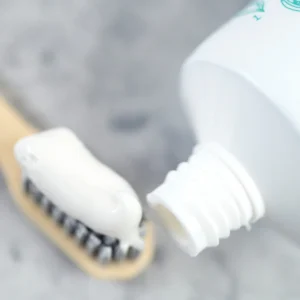Welcoming a new baby into your life is a joyous adventure marked by a beautiful series of firsts. Among the tiny socks and tender cuddles, the introduction of oral hygiene might feel like a future concern. However, establishing healthy habits early, even before those precious first teeth appear, is vital to your child’s long-term well-being. This comprehensive guide delves deep into the world of training toothbrushes for babies, equipping you with the knowledge to choose the best option and confidently navigate those initial steps towards a lifetime of radiant smiles.
The Cornerstone of a Healthy Smile: Early Oral Care
While the notion of brushing a toothless mouth might seem unusual, the advantages of starting early with a training toothbrush are profound and multifaceted:
- Building Blocks for Lifelong Habits: Introducing a toothbrush early normalizes the concept of oral care. It gently acclimates your baby to the sensation of something in their mouth, paving the way for a smoother transition to brushing actual teeth. This early routine fosters acceptance and makes oral hygiene a natural part of their daily life.
- Soothing Gums and Removing Residue: Even before teeth emerge, your baby’s gums can harbor milk residue and bacteria. A soft training toothbrush gently wipes away these remnants, creating a clean oral environment. Moreover, the delicate massaging action of the soft bristles can provide soothing comfort during the often-uncomfortable teething phase.
- Introducing Essential Tools: The training toothbrush serves as an introductory tool, allowing your baby to explore and become comfortable with an object that will eventually play a critical role in their health. This early exposure can significantly reduce anxiety and fussiness when it’s time for a regular toothbrush.
- Nurturing Sensory Development: In a safe and controlled manner, introducing diverse textures and sensations within the mouth contributes to your baby’s overall sensory development. The gentle touch of a training toothbrush offers a novel tactile experience.
- Proactive Approach to Oral Health: While complete teeth haven’t erupted, maintaining clean gums lays the foundation for a healthier oral environment, potentially minimizing the risk of early dental issues down the line.
Decoding the Choices: Key Features to Consider
The baby product landscape is vast, and the array of training toothbrushes can be overwhelming. To simplify your decision-making process, here’s an in-depth look at the crucial features to prioritize:
- Uncompromising Material Safety: Your baby’s safety is paramount. Always select training toothbrushes crafted from 100% food-grade silicone or other certified non-toxic materials. These materials are soft, flexible, and free from harmful substances like BPA, phthalates, and latex. Thoroughly inspect the product for any small parts that could potentially detach and become a choking hazard. Seek out certifications that guarantee the safety and quality of the materials.
- Gentle Bristle Design: The bristles of a training toothbrush are designed for gentle stimulation and cleaning, not vigorous scrubbing. Opt for ultra-soft silicone nubs or extremely fine, flexible bristles. These will delicately massage the gums without causing irritation or damage to sensitive tissues. Steer clear of brushes with stiff or abrasive bristles.
- Parent-Friendly Ergonomics: In the initial stages, you will guide the brushing. Therefore, an easy-to-grip, non-slip handle is essential for comfortable and controlled maneuvering. Some handles feature thoughtful contours or textures to enhance your grip.
- Integrated Safety Measures: A vital safety feature to look for is a built-in safety shield or stopper. This ingenious design prevents the toothbrush from being inserted too deeply into your baby’s mouth, significantly reducing the risk of gagging or injury.
- Optimal Head Size and Shape: The brush head should be small and oval-shaped to fit comfortably within your baby’s mouth and effectively reach all areas of the gums without causing discomfort. Avoid overly large or bulky brush heads.
- Prioritizing Hygiene: Given that babies explore the world with their mouths, hygiene is paramount. Choose a training toothbrush that is easy to clean thoroughly with warm, soapy water. Many silicone brushes offer the added convenience of being dishwasher-safe. Ensure the design promotes proper drying to inhibit bacterial growth.
- Built to Last: While the training phase is temporary, a durable training toothbrush will withstand repeated use and cleaning without easily tearing or degrading. Invest in well-constructed products.
- Engaging Design (A Bonus): While safety and functionality are paramount, a brightly colored or playfully shaped training toothbrush can capture your baby’s attention and make the introduction process more engaging. However, never compromise on safety and material quality for aesthetics.

The Best Training Toothbrush for Babies
Chart Description: This bar chart illustrates the average parental rating (on a scale of 1 to 5, with five being the highest) for the importance of different features when choosing a baby training toothbrush, based on a survey of 150 parents. Material safety and bristle softness consistently rank as the most critical factors.
The Best Training Toothbrush for Babies
Our Recommended Training Toothbrushes:
Based on our expert analysis and parental feedback, here are three highly recommended training toothbrushes available on the market:
These highly-rated products can be found at most major baby retailers and online marketplaces.
- MAM Massaging Brush: A popular choice among parents, the MAM Massaging Brush features an extra-small, ultra-soft silicone brush head specifically designed for delicate baby gums. It also includes a massaging head on the opposite end to soothe teething discomfort. The short, ergonomic handle provides a secure grip for parents, and the integrated safety shield offers peace of mind. Made from BPA-free materials.
- FridaBaby SmileFrida the Finger Toothbrush: This innovative finger toothbrush, crafted from 100% medical-grade silicone, offers an exceptionally gentle and direct approach to cleaning your baby’s gums. Its easy cleaning and hygienic storage case make it a practical choice. The dual-sided design provides gentle cleaning and gum massage, allowing parents to control pressure and placement.
- Baby Banana Infant Training Toothbrush: The whimsical banana shape and soft, flexible silicone bristles of the Baby Banana Infant Training Toothbrush make it both fun and functional. Made from food-grade silicone, its bendable design minimizes the risk of injury. The easy-to-grasp “peels” are comfortable handles for both parents and your baby’s small hands. It’s also dishwasher and freezer-safe, offering versatility for both cleaning and teething relief.
A Gentle Introduction: Your Step-by-Step Guide
Making the introduction to a training toothbrush a positive and comfortable experience is key to establishing lifelong healthy habits. Follow these gentle steps:
- Optimal Timing: Choose a calm and relaxed time when your baby is content and not overly tired or hungry.
- Familiarization First: Allow your baby to see, touch, and even mouth the clean toothbrush before you begin using it. This helps them become accustomed to the object in a non-threatening way.
- Water-Only Start: Simply dampen the soft bristles with plain water for the initial attempts. There’s no need for toothpaste at this stage.
- Gentle Gum Massage: Gently brush or massage all areas of your baby’s gums, paying particular attention to where teeth are likely to emerge. Use light, circular motions.
- Keep it Short and Sweet: Begin with very brief sessions (15-30 seconds) and gradually increase the duration as your baby becomes more comfortable. Maintain a positive and encouraging tone with smiles and soft words.
- Integrate into the Routine: Aim to incorporate “brushing” into your daily routine, perhaps after a morning and evening feeding. Consistency is crucial for establishing a habit.
- Supervised Exploration: As your baby develops better hand-eye coordination (around 6-12 months), you can allow them to hold and mouth the toothbrush under your close supervision. This will enable them to explore the sensation independently while ensuring their safety.
- Respect Resistance: If your baby resists, do not force it. Try again later in the day or the next day. Patience and consistency are more effective than coercion.
- Proper Care and Storage: After each use, rinse the toothbrush thoroughly with warm water and let it dry completely. Store it in a clean and dry place, away from other items. Replace the training toothbrush regularly, typically every 3-6 months, or sooner if the bristles show signs of wear.
The Natural Transition: Moving to a Toddler Toothbrush
As those first adorable teeth erupt, typically around 6 months, it’s time to transition to a soft-bristled toothbrush specifically designed for toddlers. These toothbrushes feature smaller heads and even softer bristles than adults, making them ideal for little mouths and newly emerged teeth. At this stage, as recommended by your pediatrician or dentist, you can also begin using a tiny smear (the size of a grain of rice) of fluoride toothpaste. Continue supervising your child’s brushing until they develop the dexterity and understanding to brush effectively independently, usually around 6-7 years old.

The Best Training Toothbrush for Babies
Chart Description: This timeline visually depicts the recommended toothbrush type for children from birth through early school years, highlighting the key stages of oral hygiene tool progression.
A Foundation for a Lifetime of Healthy Smiles
Introducing a training toothbrush is far more than just a preliminary step; it’s the cornerstone upon which a lifetime of healthy oral hygiene habits is built. By selecting the right tools and making the experience positive and gentle, you empower your child with the skills and comfort level necessary to maintain a bright and healthy smile for years. Embrace this “first” with patience and enthusiasm, knowing that you are laying the groundwork for a lifetime of good oral health.
Expert Tips from your Pediatric Dentists in Beverly Hills
To provide further valuable insights, we’ve compiled expert tips from leading pediatric dental specialists:
- Early Gum Care: Begin by gently wiping your baby’s gums with a clean, damp washcloth even before introducing a training toothbrush. This early step familiarizes them with having their mouth cleaned.
- Make it Engaging: Incorporate songs, a timer, or a special “brushing song” to make the experience fun and engaging for your baby.
- Lead by Example: Let your baby observe you brushing your own teeth. Children learn and are more likely to participate when they see their parents doing it.
- First Dental Visit: Schedule your baby’s first dental checkup when their first tooth appears or by their first birthday, whichever comes first. Early professional guidance is invaluable.
- Nighttime Feeding Precautions: Avoid putting your baby to bed with a bottle containing anything other than water. Milk, formula, or juice can pool around the gums and emerging teeth, significantly increasing the risk of early childhood caries (tooth decay).
Frequently Asked Questions About
The Best Training Toothbrush for Babies
You can introduce a training toothbrush as early as 3-4 months of age, even before teeth emerge. This helps your baby get used to the sensation and establishes the routine.
For babies without teeth, water is sufficient. Once teeth begin to emerge, consult your pediatrician or dentist about using a rice-grain-sized amount of fluoride toothpaste.
Rinse thoroughly with warm water after each use. Many silicone brushes are dishwasher-safe (top rack). Allow to dry completely between uses.
Be patient and persistent. Try different approaches – singing, making it a game, or letting them hold a second toothbrush while you use the first one. Keep sessions brief and positive.
Baby training toothbrushes are widely available at most pharmacies, supermarkets, baby stores, and online retailers in Beverly hills or Any other city
Ensure the toothbrush is made of non-toxic materials and doesn’t have small parts that could detach and become a choking hazard. Supervise your baby during brushing. a supervision while using the toothbrush is advised.
A tiny smear or pea-sized amount of fluoride toothpaste is generally safe if swallowed in small quantities. However, encourage your child to spit it out as they get older.
Important Note: This blog post provides general guidance and should not be considered a substitute for professional medical or dental advice. Always consult your pediatrician or dentist for personalized recommendations regarding your child’s oral health and development.



